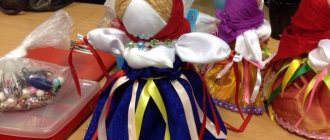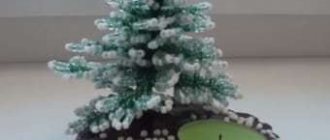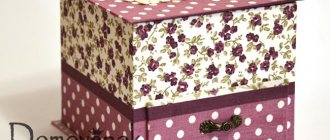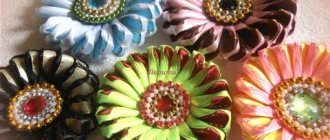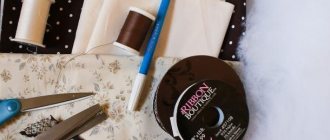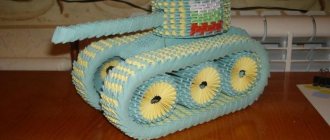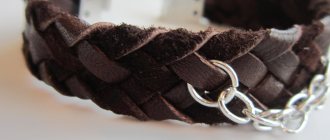A distinctive feature of the articulated doll is the mobility of the joints, which allows it to take any pose. Making a doll with joints with your own hands is a real art, the downside of which is many hours of painstaking work.
Indian casting master Esther Marker is promoting the technology of making ball-jointed dolls without firing from Flumo injection molding plastic. The same method is used by the domestic craftswoman Olga Baskakova. But our other compatriot, Marina Bychkova, who lives in Canada, prefers the traditional technique of creating dolls by firing them in a kiln.
Bychkova's designer dolls are considered one of the most expensive in the world - the cost of one copy can reach up to 50 thousand USD, the most expensive ones go to auctions. Serial dolls produced by various brands are much cheaper, but also far from budget - from 400 to 1000 USD.
How to make a jointed doll: sequence of work
The main stages of work (each of which takes from several hours to several days) are:
- execution of the sketch;
- making a rough model from plasticine;
- creating molds for casting from clay or plaster (molds);
- pouring plastic into molds and creating parts of the future doll;
- sanding and grinding of parts;
- firing of parts in an oven (some types of injection molded plastic do not require firing);
- assembling the doll (installing hinges and hooks);
- painting of the product;
- final touches (clothing, wig, stand).
How to make a jointed doll?
16 messages
Articulated doll FAQ #ksshk_newbie #material To search for words across the topic, press Ctrl+F and type the word into the search bar that appears.
So, you decided to make a jointed doll. First of all, you must understand that puppet making is quite expensive and time-consuming, and requires training and in general can take about several months. Attempts to save money and make a doll quickly may not end very well. If you have never sculpted anything, we recommend that you practice on sculptural plasticine for about a month. The Videos and Documents section presents various materials on anatomy. Please do not neglect them in the first stages of learning to sculpt. When training, sculpt figures of such a size that your head is slightly smaller than your fist. Making a full-fledged doll from plasticine is impossible; it is used only for training and creating master models from which plaster molds are removed.
1. You should choose the material from which you will make the doll. The group has an album with materials and reviews https://vk.com/club18803320?z=album-18803320_113500863 They have various features:
1.1) SELF-HARDENING MASSES (these are masses that harden in air and are easy to soak with water; they need to be primed, painted, varnished and the product protected from water), they can be used for kneading into plaster molds, or they can be sculpted from them on a blank, for example, from foil wrapped in cling film.
1.2) POLYMER PLASTICS (plastics baked in the oven that are not afraid of water, they do not need to be primed, but only varnished to secure the painting of the face and body), they can also be kneaded, but in plastic or silicone forms if you are going to knead the baked goods in plaster, then it needs to be coated with varnish so that it does not eat the plasticizer; in the future, such forms can only be kneaded, since casting in them will not work; from the casserole can also be sculpted on a blank.
1.3) CASTING SELF-HARDENING MASSES, such as Flumo (they are not primed and painted in liquid form, the cast parts are subsequently varnished), casting compounds require the production of a master model and plaster molds. The master model must be made almost perfectly, since it is extremely difficult, and sometimes impossible, to correct the cast part.
1.4) PORCELAIN (an incredibly durable, waterproof material that requires firing in a kiln at over 1000 degrees; it's used by professionals)
1.5) DOLL PAPIER-MACHE (homemade paper-based mass is called papier-mâché, despite the fact that it contains many more ingredients than paper and glue, such mass often requires priming, painting and varnishing; its color, durability and strength depends on composition)
1.6) POLYURETHANE is initially 2 liquid components, which, when mixed, enter into a chemical reaction and produce a solid, durable material. Polyurethane is poured into silicone molds. Different PUs have their own lifetime - the time from mixing the components to the start of gelatinization - and their own polymerization (curing) time. It is slightly heavier in weight than self-hardening plastics. Different brands of PU lend themselves to post-processing in different ways.
You can read more about each type of material below.
2. WHAT MATERIAL SHOULD BE USED? It depends on your decision, and on what skills and goals you have:
2.1) SELF-HARDENING MASS is ideal for beginners; it can be soaked if something doesn’t work out. You can rehabilitate the dried mass by crumbling the unnecessary part into a bag or container, pouring water on it and closing it for a while. If the mass is very wet, simply open the bag or container in which it was contained and stir it about once every half hour until it reaches the desired consistency. While working, you need to wet your hands with water and knead the mass with a small amount of water before sculpting. After making the doll, it must be coated with an aerosol primer (for example, Kudo auto primer, other varnishes and primers, as well as reviews of them are in the album https://vk.com/album-18803320_209914050), artistic primer in a jar for application with a brush is not suitable. Alkyd varnishes/primers/paints cannot be combined with acrylic varnishes/primers/paints.
The next step is painting, you can use spray paint, oil paints, acrylic and others. The last thing is to coat it with a protective varnish (for example, Kudo, Mr Super Clear, Idea spray, Tamia).
— Master classes on working with self-hardening masses: Complete master class from RA-duet “Jointed doll from LaDolla” — https://vk.com/album-39204070_182281689
2.2) BAKED POLYMER PLASTICS - this material is a little more difficult to process than self-hardening mass and requires an oven for baking with temperature control, as well as certain skills in modeling, because It is advisable to give it an ideal shape right away, because it is difficult to sand, and after sanding it requires long-term polishing.
2.3) CASTING MASSES requiring casting in plaster.
#mastermodel is made from plasticine, self-hardening and baking. Before removing the molds from the MM from the self-hardening machine, it is covered with primer and auto enamel to make the molds come off easier.
How to iron parts before casting from Zetterelly - https://zetterelly.livejournal.com/2136.html
2.3.1) FLUMO. To use it, you will need forms made of plaster (g-16) or alabaster and MM (Master Model), from which the plaster forms will be removed, and subsequently you will pour the material into it. But keep in mind that Flumo is afraid of water (trying to bake it in the oven will speed up its drying, but will not add strength or water resistance) so it needs to be varnished
2.5) Another material is PAPIER-MACHE (this is NOT cold porcelain), you can make it yourself, there are a lot of recipes on the Internet - with the addition of sawdust, bustilate, chalk. But keep in mind that papier mache is not a very easy material to process, which, depending on the mass, can be sanded either well or poorly, cut easily or difficultly, and may even crumble if mixed incorrectly.
Where to start?
The “birth” of an author’s articulated doll begins with the sculpting of a plasticine model. Despite the apparent simplicity, many novice craftsmen get stuck at this stage, since sculpting a figure with symmetrical proportions from plasticine with your own hands is a rather difficult task.
Experienced craftsmen familiar with the norms of anatomy draw sketches from which rough models are sculpted. For beginners, it’s easier to use a ready-made source code, which they will have to tinker with, but are guaranteed to get the same details.
Therefore, for example, dollmaker Olga Baskakova makes articulated dolls with her own hands based on Barbie dolls from a flea market, disassembling them into their component parts. At the same time, Baskakova’s products are not bootlegs (copies of toys from famous brands, in this case Barbie™). Hinged products differ from the originals like heaven and earth.
INTERESTING: Clothes and shoes for Monster High dolls
The master's work begins with disassembling the doll into parts using a manicure scalpel. At this stage, the fastening pins that connect the fragments to each other are removed from the doll’s body parts (the pins are easily cut with sharp scissors). The hands and feet must be separated from the forearms and shins for subsequent connection with a hinged mount.
Step-by-step instructions on how to make a jointed doll
- To create a doll, you need a sketch. You can easily find it on the Internet or draw it yourself. A total of three identical copies will be required.
- Take one copy and cut out the head and torso in profile and front. Lay out the resulting parts on foam plastic and cut them out along the contours.
- Now turn the foam blanks on their side, attach the cut out drawings and cut along the contour again.
- Now you need to remove everything unnecessary and give the foam parts smooth outlines.
- To work with papier-mâché, it is necessary to equip the workpieces with holders, the role of which will be played by wooden sticks. Insert one of them into the neck, and the second into the place where the leg (either) should be.
- Next you will need to prepare a working mixture. To do this, toilet paper is mixed with PVA glue. The resulting mixture should be applied to the surface of the foam parts. Making a ball-jointed doll with your own hands for beginners is a rather labor-intensive and complex process, so you should do everything very carefully and study in detail the technology of its manufacture in advance. So, if you plan to make the eyes of a doll from beads, then it should be inserted at this stage. Glass or painted eyes are applied afterwards to the finished product. The resulting blanks must be dried for two to three days.
- Now you need to thread a wooden skewer into a cocktail tube, stick hinges on top and also send it to dry for 1-2 days.
- Unfold the paper clips and cut four pieces of wire 40 mm long. Each segment must be bent using round teeth as shown in the photo.
- From the same straightened paper clips you need to cut 20 more small pieces - these will be the fingers and toes.
- Wrap half of each finger in two rows with Iris threads and lubricate with PVA. Collect them in groups of five, form hands with fingers and feet using thread, apply glue again and put away to dry.
- Place papier-mâché on the hands and feet, giving the shape of real feet and hands. In this case, it is necessary to fashion round hinges at the locations of the joints.
- Make two hinge balls from plasticine and wrap them in cling film so that they do not stick inside the doll’s body.
- Now you need to make recesses in the foam plastic blank in the places where the hinges should be, cover their surface with papier-mâché and try on a hinge ball to the recess. If necessary, adjust the size of the recess to the size of the hinge.
- Now, using the same method, but without using foam plastic, you need to sculpt arms and legs from polymer clay, inside of which there should be a cocktail tube. A layer of liquid polymer clay should also be applied to the surface of the head, torso, feet and hands. When the parts are dry, you can use a pencil or marker to mark the places of cuts and holes on all hinged parts (hands and feet, knee and elbow joints).
To understand what the parts should look like and how to assemble them correctly, you can watch the video.
Video on how to make a jointed doll from polymer clay
- Next, use a drill to drill the marked holes. If you do not have the necessary tool for the job, you can use a regular awl. To create cuts along the intended marks, you can take a regular nail file or a stationery knife.
- You need to insert a paperclip into the sawn hole.
- Cover all the pieces again with a layer of liquid polymer clay, leave to dry completely, and then gently but thoroughly sand each piece. In this case, you need to make sure that all holes (cocktail straws) are in working order.
- To assemble the doll, you need to attach a bracket with a round-toothed end to its head. Insert the end of a thin rubber band into the round hole of the staple and tie it in a knot. Form two loops from the elastic band, as shown in the photo, and insert each end of the loop into the tubes located inside the doll’s body parts. Then fasten the elastic band to your hands in the same way and secure its ends.
- Tighten the elastic bands if necessary, file the joints, checking the mobility of each part.
- Then glue the hair, draw eyebrows and lips with paint.
Making articulated dolls with your own hands is a rather complex and time-consuming process, and it’s not enough to make the doll itself, you also need to sew clothes for it.
The main guarantee of a successful result in this matter is compliance with all proportions and sizes according to the sketch. In order to replicate as accurately as possible all the bends and indentations of the human body, it is necessary to carefully study its structure. So, you can carefully examine your body or use another factory-made doll as a model. Do you like articulated dolls? Would you like to make one like this? Share your opinion in the comments.
Making a rough model from plasticine
At this stage, you need to recreate all the details of the original, but with holes for the hinges. Olga Baskakova uses sculptural plasticine to create rough forms. This stage is the longest, it consists of the following steps:
- Making a mold (mold). A piece of plasticine with a part (it is most convenient to make them rectangular) is placed on a plasticine cake, the edges of which are folded. The result is a square shape, inside which rests a fragment of the doll embedded in plasticine.
- Filling molds with gypsum mortar. After hardening, the plasticine is removed and a plaster platform is obtained, inside which the Barbie part is “walled up”. To make the second part of the mold, you need to place the platform with the part on a plasticine cake, bend the edges and fill it with plaster again. This way we will get 2 identical platforms (one is hollow, inside the second is a part from the doll, which can already be removed).
Then you can move directly to creating a draft form:
- line the matrix with cling film and fill with plasticine;
- Flatten the plasticine and, carefully pulling the film, remove the workpiece. Each of the blanks will be half of a certain part of the future doll.
The halves are connected to each other. In this way, all the details of a Barbie doll are recreated from plasticine. Now you need to make rough hinges from plasticine or polymer clay (Baskakova uses Zernite clay) and connect the moving parts to each other. At this stage, the installation locations of the hinges in the parts are expanded. If you compare the plasticine parts of the doll with the original Barbie fragments, they will differ precisely at the joints.
The rough model is not disposable; based on it, you can make many articulated dolls with your own hands.
Bringing beauty
Now it’s time to start adding some external polish, i.e. priming and painting doll parts with your own hands. Most artists use acrylic paints as a base, and apply the final touches with pastels. After painting, the parts are varnished.
Particular attention is paid to facial painting. Master Olga Baskakova perfectly masters the art of conveying moods to her products: her dolls are cheerful, sad, and thoughtful. For those new to painting, in order not to spoil the product, it is better to copy the doll’s face from the source you like.
The finishing touches are the doll's outfit and her wig. If you manage to make a jointed doll with your own hands, sewing an outfit to your liking will not be difficult. You can borrow a wig from the same Barbie doll or make it yourself from any material that even remotely resembles hair.
Most puppeteers note that the technology for creating articulated dolls can only be understood visually: it is unrealistic to create based only on instructions. Therefore, master classes on making hinged products with your own hands are very popular (as they say, it’s better to see once than to read a hundred times), for example, here: https://www.youtube.com/user/Lbrevner/videos.
How is casting done?
The next step is casting fragments of the future doll from injection molded plastic. Modeling Cast plastic is good, but there are other types of material (eg Flumo, LaDoll). To do this, you need to make gypsum molds based on our plasticine parts using the method described above.
INTERESTING: Painting the face of a textile doll: the best master classes
When creating molds, a sprue is cut out of them - a small channel through which plastic will be poured into the mold cavity. After the plastic hardens, the parts of the mold are separated and a solid part is obtained.
The video shows the process of forming the head and body of a doll without using molds:
Processing of finished parts and installation of hinges
The next stage is grinding the parts. The delicate porcelain texture, for which jointed dolls are so valued, is achieved by meticulously polishing each fragment. Masters use a manicure frieze and fine abrasive sandpaper.
Then you need to install the hinges. Finding hinges is not a problem; they are sold in abundance in handmade stores. Some craftsmen prefer to make them themselves, from polymer clay. The main thing is that their color matches as closely as possible the color of the doll itself. Holes for elastic bands are cut out in the joints, then the doll is roughly assembled with elastic bands and hooks.

